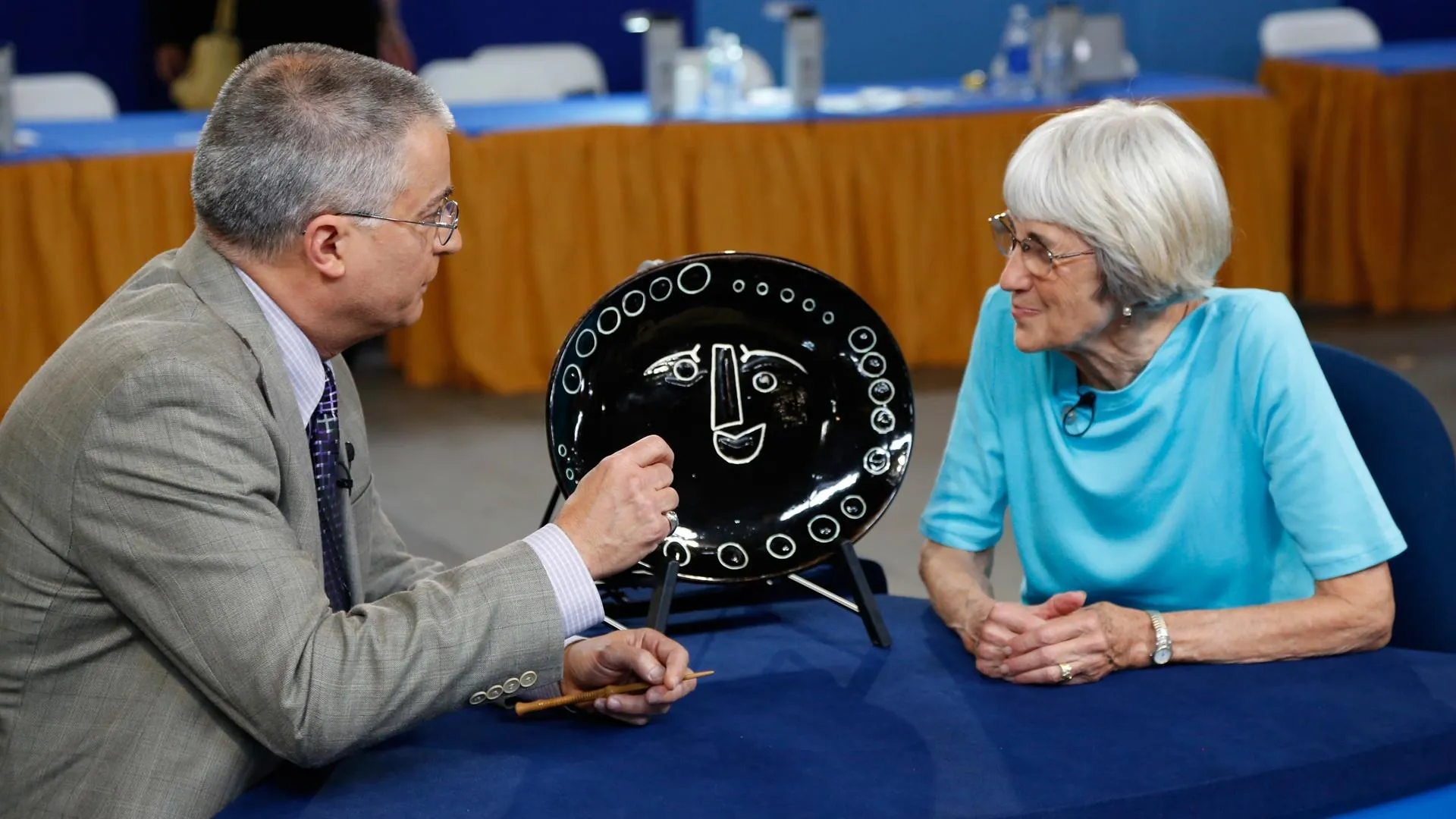GUEST: My husband's mother passed away about a year and a half ago, and his brother and sisters and him were going through things. He asked me if I liked anything, and I fell in love with these. I thought they were beautiful.
APPRAISER: Well, I definitely agree with you. I think they're absolutely stunning. Do you know anything about them?
GUEST: We think they belonged to his great-grandfather. They were in the family and probably from the middle 1800s.
APPRAISER: And is that who we see here?
GUEST: This one here is his great-grandfather, and this is his grandfather.
APPRAISER: Okay, well, it's a fabulous pair of candlesticks. Silver gilt. They're made by Tiffany and Company. It's a very different company from Tiffany Studios. But the Tiffany silver ranks amongst the best silver that was produced in America in the 19th century. They have the cachet, the caliber of a real top maker. Just tipping one back here, it has a series of marks underneath it. It says, of course, "Tiffany and Company Makers, Sterling." This is "925-1000," so for sterling silver, that's the parts per 1,000. Underneath that is the letter "T." Now, that's the date letter, 1891 to 1902. So for a short period, they used this date letter, but it helps us date these candlesticks very accurately. So they're basically the end of the 19th century.
GUEST: Okay.
APPRAISER: They are the Chrysanthemum pattern, okay? So we see chrysanthemum flowers and leaves all over, and in a wonderful sort of twirling, wrap-around style around the central stem there. The quality of the application of this silver paired with the fact that they're silver gilt...
GUEST: And what's silver gilt?
APPRAISER: Silver gilt is essentially where they've applied a gilt wash, or a vermeil wash, as it's sometimes named, to the outside of the article. It's just another layer of lavishness, really, that we can bring to this particular pair. How many of these do you have?
GUEST: There's a set of four.
APPRAISER: Really, so there's four. So we have two here...
GUEST: And two at home.
APPRAISER: Two at home, okay. I would imagine that the two that we have here would sell at auction for somewhere between $4,000 and $6,000.
GUEST: Okay.
APPRAISER: If you had the four together, you'd probably get somewhere in the region of $10,000 to $15,000 at auction.
GUEST: Okay, that's very good to know.





